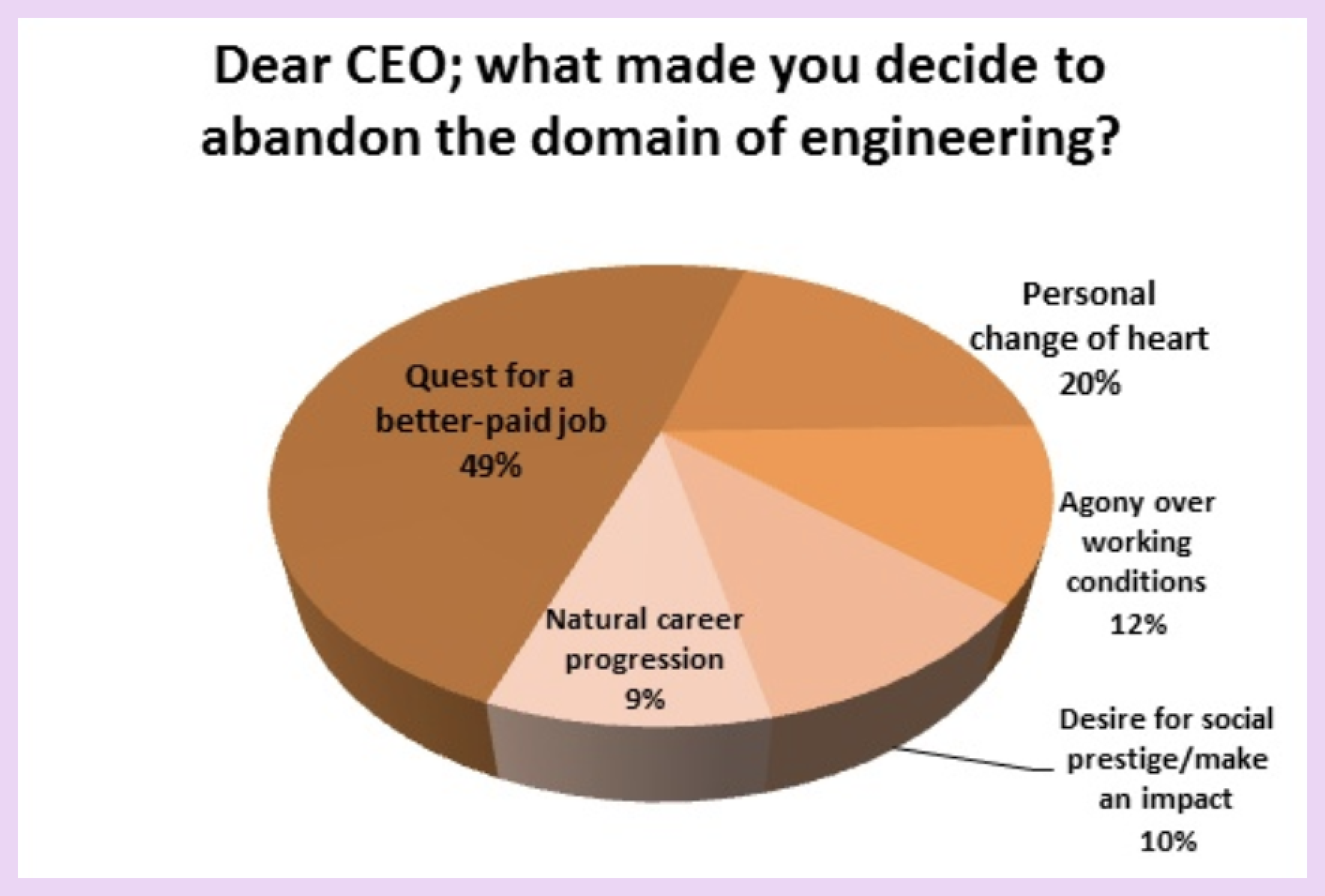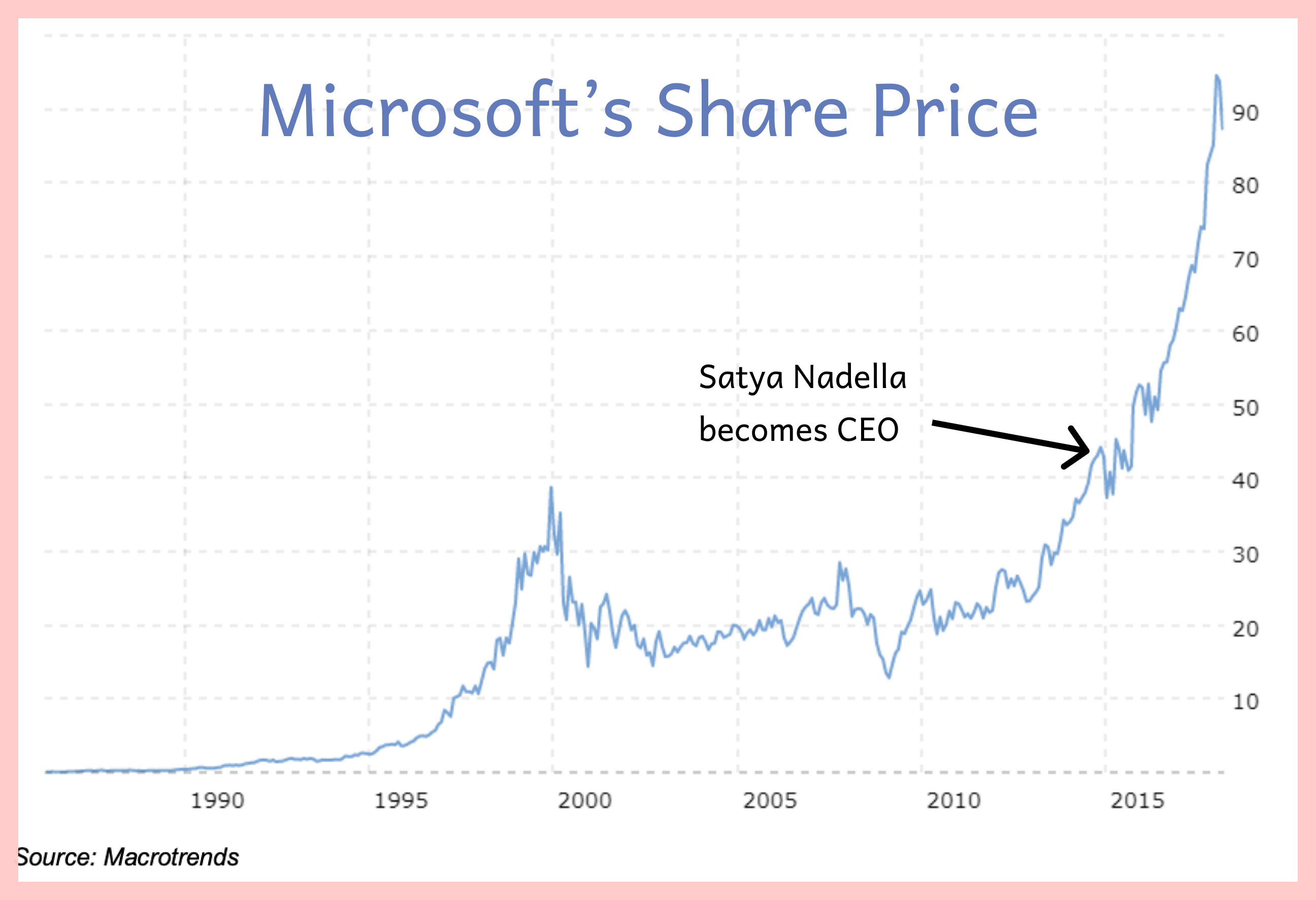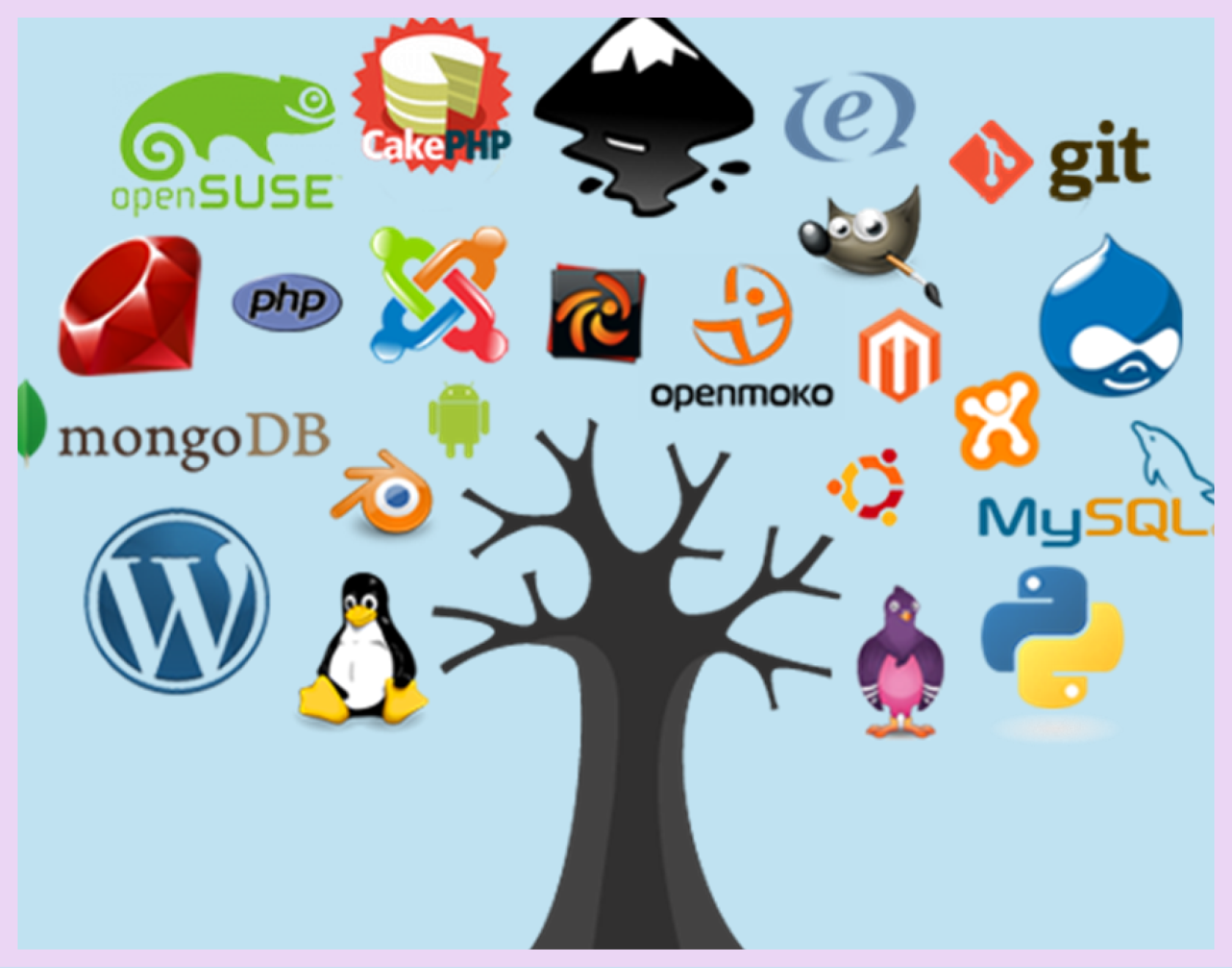More than 30% of Fortune 500 CEOs have a degree in engineering. They outnumber MBA holders by a distance.
But ask most engineers and they’d rank management as probably the very last thing they want to do. Senior software engineers complain about never getting any time to code anymore.
So what exactly explains the rise of the Engineer CEO?
In an online survey conducted by Insead with over 1,300 executives, the most common reason for moving from engineering to management was more money.

But instead of getting promoted for their managerial ability, engineers were getting promoted for their technical ability. And that doesn’t always translate into being a good leader.
Instead of solving engineering problems, you have to solve people problems. You have to indulge in company politics.
And that’s not everyone’s cup of tea.
But it turns out that engineers do have have a wide range of transferable skills that they bring to the table.
Here are five examples of Engineer CEOs and how their background helps them in their job:
Our industry does not respect tradition - it only respects innovation”
These are the words that Nadella sent in an email when he became CEO of Microsoft in 2014.
Microsoft has grown over 200% since.

For the last decade before Nadella took over, Microsoft’s big consumer products had been reactionary, not revolutionary.
Nadella’s engineering background allowed him to focus on Microsoft’s products and reposition the company as an innovator.
This was something Ballmer simply couldn’t do because instead of looking at Microsoft through the lens of its products, he could only look at it through the lens of its accounting books.
Engineers are lazy. They don’t like to repeat taks they can automate.
Sid Sijbrandij, CEO of Gitlab, started the company's famous handbook for new hires because he didin’t want to repeat himself.
You shouldn’t look to automate everything. But scalable processes and systems are the type of things that come naturally to engineers and are immensely beneficial as a company grows.
“Whenever you try to learn something, you try to do it by building things”
Finance folks will never understand a technology as well as an engineer because they don’t have first hand experience playing around with it.
The CEO of Elastic, Shay Bannon, founded the company after building a recipe app.
He realized that the first thing he wanted to do was be able to search a recipe. But the existing software was broken. So bit by bit, he built something he could use.
Shay Bannon put the solution he developed into the hands of the community. By making his software open source, he was able to get feedback and iterate.

One of the things that he found valuable was growing his community.
He spoke to users daily and understood their needs. This ensured Elastic was always headed in the right direction.
Open source was his MBA.
Mary Barra helped pull GM out of the largest bankruptcy in history and put it back on track to being a highly profitable business.
One of the biggest reasons for this is because her engineering background allowed her to understand various different parts of the company.
She’d been a quality inspector on the assembly line, a manufacturing plant manager, and the VP of Human Resources before becoming CEO.
This allowed her to make decisions that put people first because she could truly identify with them, knowing how hard they work and what they do to make the company succeed.
This last one is more of a prediction.
Twitter critics have in the past taken major issue with the company’s slow pace of shipping new features.
Agarwal, who’s been with company since 2011, is a product focused leader who’s going to focus on innovation. He’s already rolled out a subscription product known as Twitter Blue, Twitter’s audio chat feature Spaces, and made some strategic acquisitions.
Twitter has largely stayed unchanged since its inception. It’s up to an engineer turned CEO to make it exciting again.
And something tells me there’s no one else better for the job.
Some people call it a newsletter - I call it a good time. I write about tech careers and how you can get ahead in yours. It’s my best content (like this case study) delivered to you once a week.